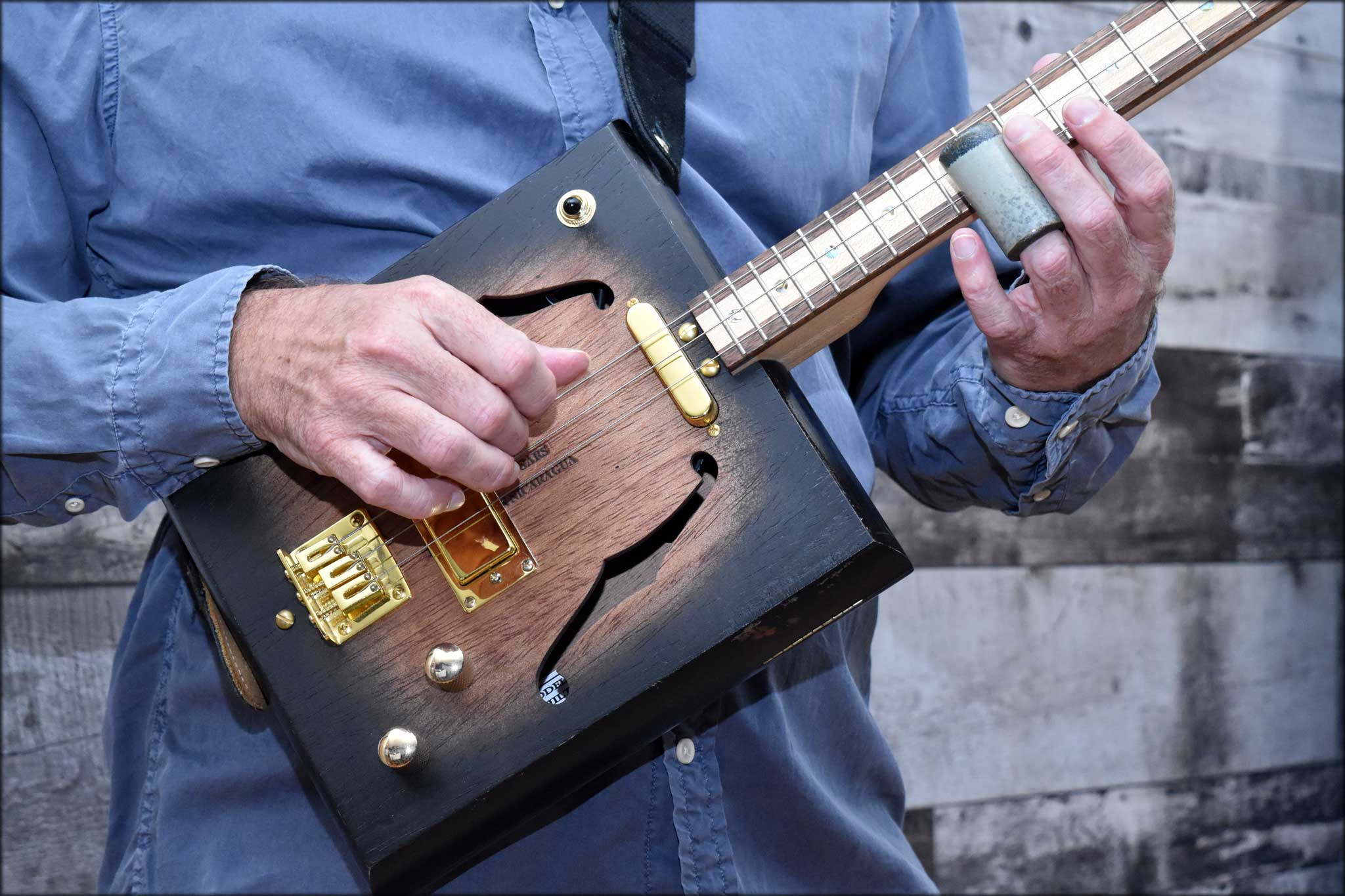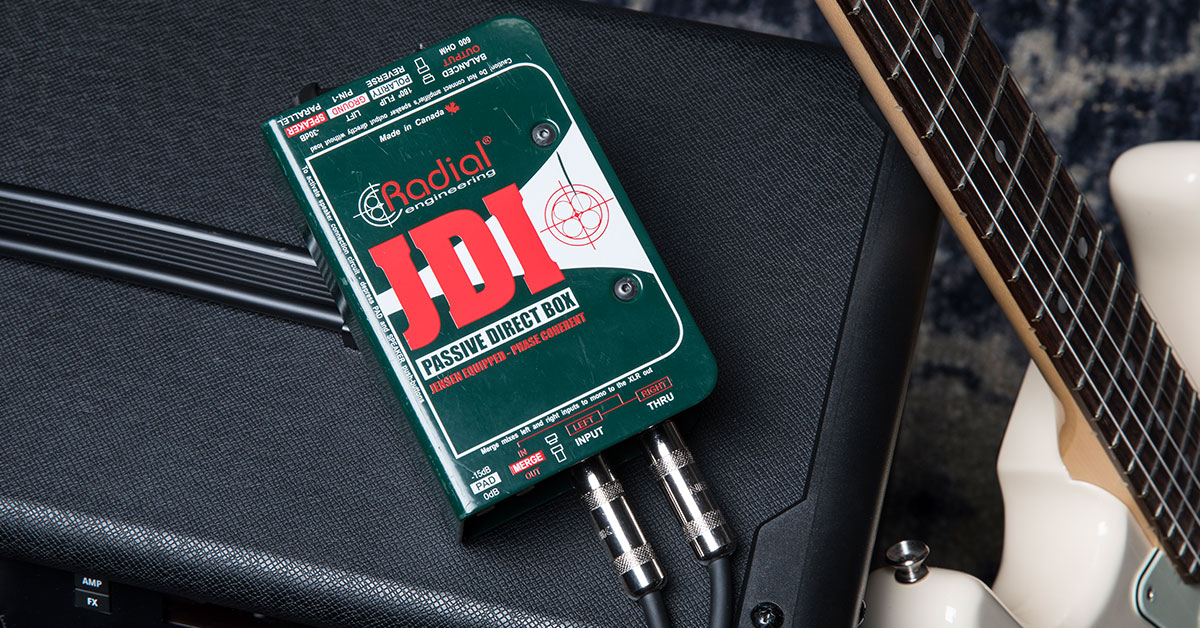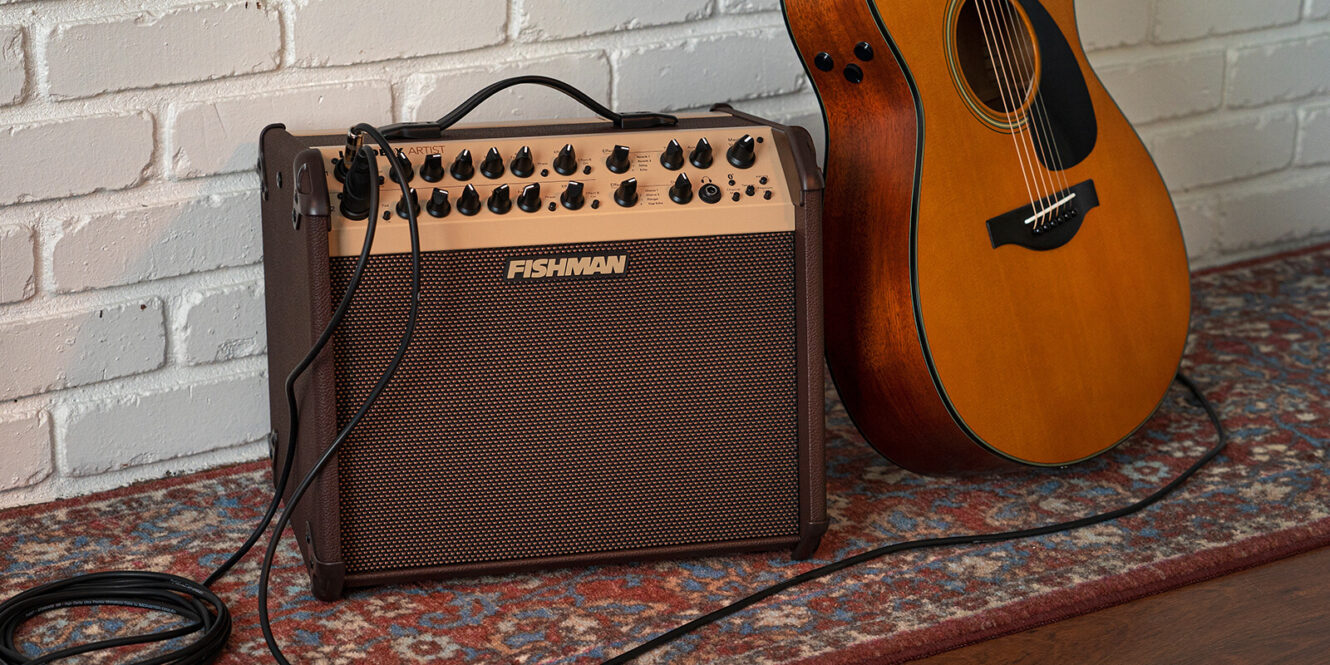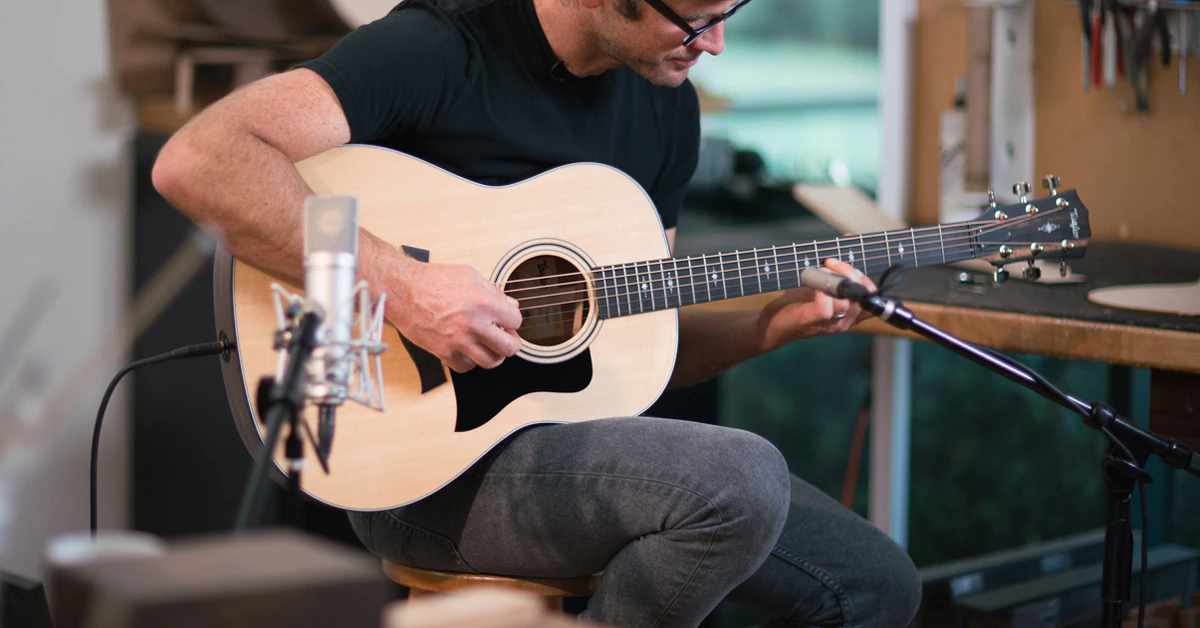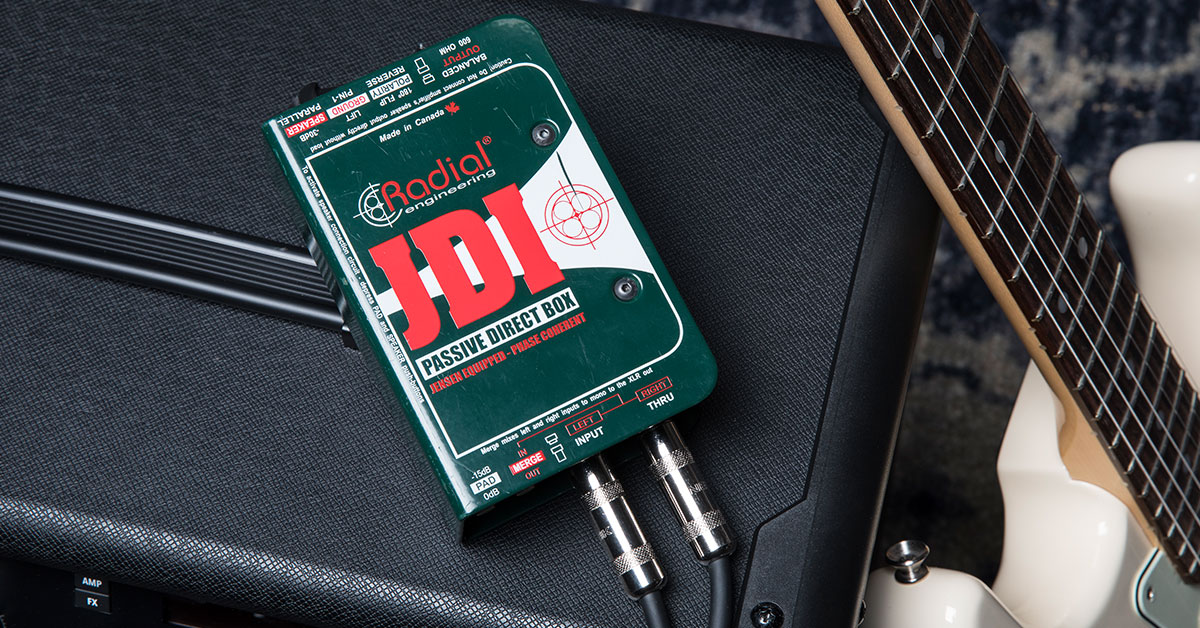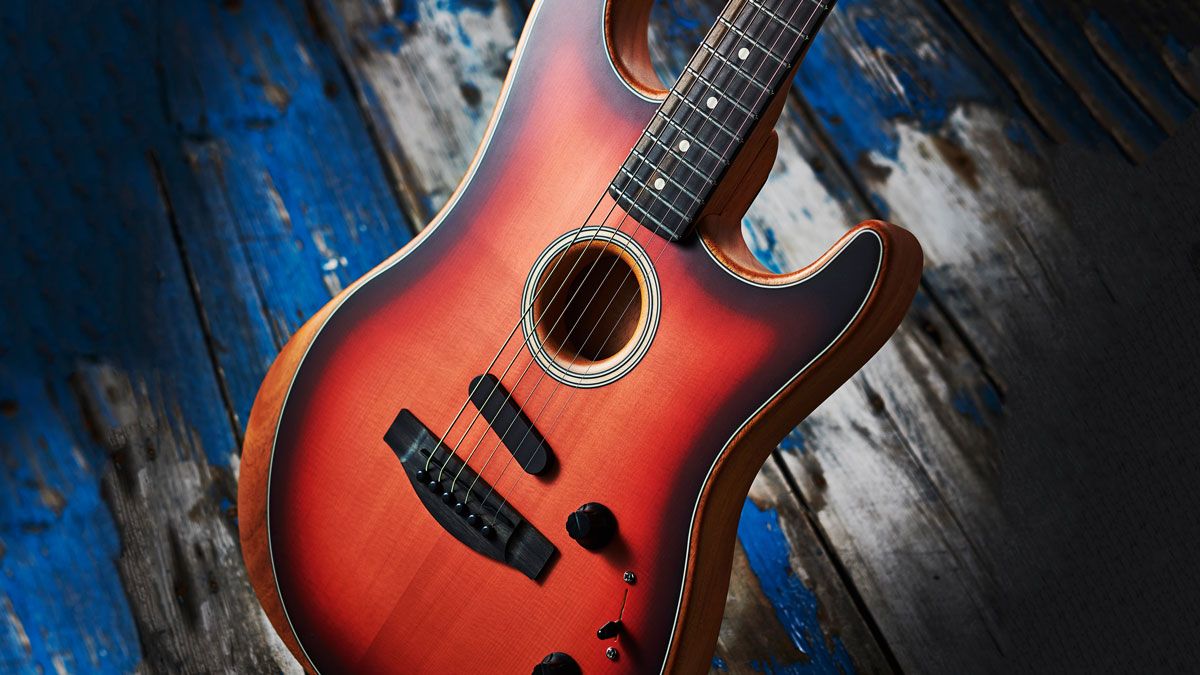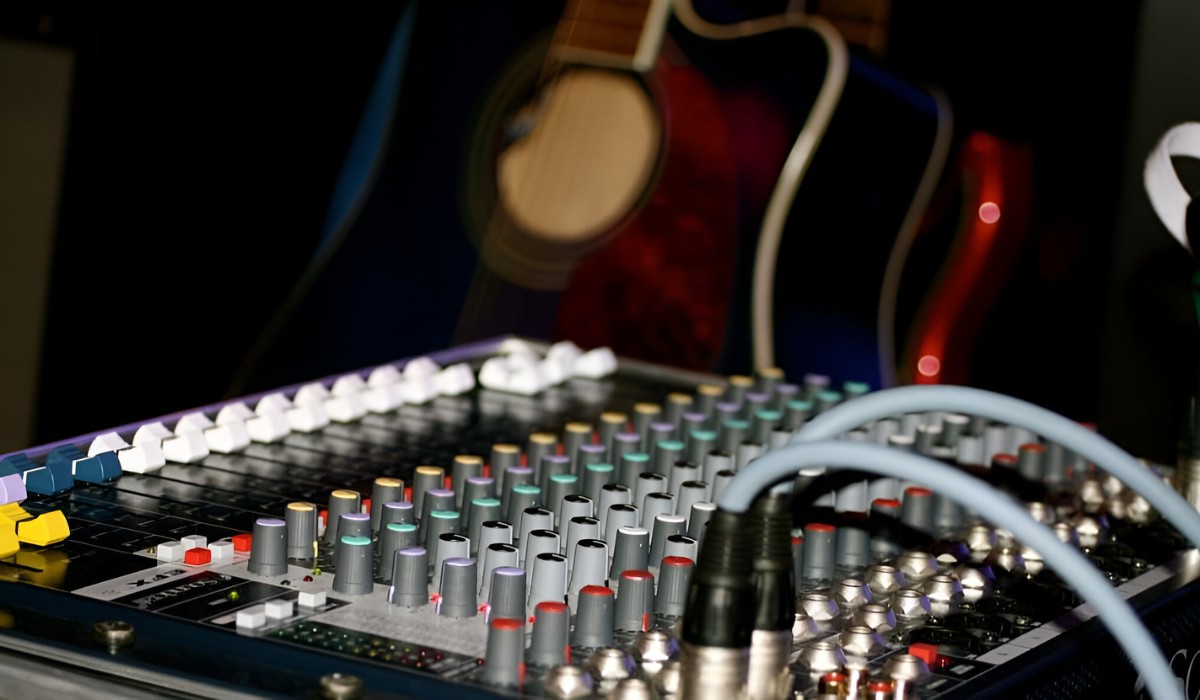Introduction
Welcome to the exciting world of cigar box electric guitars! Crafting your own unique instrument from a humble cigar box can be a deeply rewarding and fulfilling experience. The history of cigar box guitars dates back to the 19th century, where resourceful musicians created these instruments using whatever materials they could find. Today, the tradition lives on as a testament to creativity and innovation in the world of music.
Building a cigar box electric guitar allows you to unleash your creativity, experiment with different components, and ultimately create a one-of-a-kind instrument that reflects your personal style and musical preferences. Whether you're a seasoned luthier or a curious beginner, the process of constructing a cigar box electric guitar is both accessible and enjoyable.
This guide will walk you through the step-by-step process of crafting your very own cigar box electric guitar. From selecting the perfect cigar box to installing the pickups and electronics, each stage of the build will be thoroughly explained, ensuring that you have the knowledge and confidence to bring your musical creation to life.
As you embark on this journey, be prepared to embrace the spirit of innovation and exploration. Building a cigar box electric guitar is not just about assembling parts; it's about infusing your instrument with character, history, and a touch of your own artistic flair. So, grab your tools, unleash your creativity, and let's dive into the fascinating world of cigar box electric guitar construction.
Selecting the Right Cigar Box
When it comes to crafting a cigar box electric guitar, the choice of the cigar box itself is a crucial first step. The box not only serves as the body of the guitar but also contributes to the instrument’s unique aesthetic and tonal qualities. Here are the key considerations to keep in mind when selecting the right cigar box for your project.
- Size and Shape: Cigar boxes come in various sizes and shapes, each offering distinct characteristics. Consider the overall dimensions of the box and how they align with your vision for the guitar. A larger box may provide more resonance and internal space for components, while a smaller box can yield a tighter, focused sound.
- Material and Construction: The material and construction of the cigar box play a significant role in shaping the guitar’s sound. Wooden boxes are a popular choice for their resonance and tonal warmth, while metal or composite boxes can impart a unique, edgy character to the instrument. Additionally, consider the sturdiness of the box, as it will need to withstand the tension of the strings and hardware.
- Aesthetic Appeal: Beyond functionality, the visual appeal of the cigar box is an important factor. Whether you prefer a weathered, vintage look or a sleek, modern aesthetic, the box’s appearance should resonate with your personal style and artistic preferences.
- History and Story: Many cigar boxes carry a rich history and unique artwork that can add depth and character to your guitar. Consider the backstory of the box and how it aligns with the narrative you wish to convey through your instrument.
Ultimately, the ideal cigar box for your electric guitar is one that resonates with your musical vision and sparks your creativity. Whether you repurpose a cherished box with sentimental value or seek out a new box with specific tonal qualities, the process of selecting the right cigar box sets the stage for a truly personalized and meaningful guitar-building experience.
Choosing the Perfect Neck and Fretboard
When it comes to crafting a cigar box electric guitar, the choice of the neck and fretboard is a critical aspect that significantly influences the playability and overall character of the instrument. Here’s a comprehensive guide to help you make informed decisions when selecting these essential components for your guitar.
- Neck Selection: The neck of a guitar is the central conduit for transmitting the player’s energy to the instrument. When choosing a neck for your cigar box guitar, consider factors such as scale length, wood type, and profile. The scale length determines the tension and feel of the strings, while different wood types can impart varying tonal characteristics. Additionally, the neck profile, whether it’s a C-shape, V-shape, or other contours, can significantly impact the comfort and playability of the instrument.
- Fretboard Considerations: The fretboard plays a crucial role in defining the playability and tonal response of the guitar. Factors such as fret material, radius, and inlay design should be taken into account. The fret material affects the durability and feel of the frets, while the fretboard radius influences the overall feel of the neck and the ease of bending notes. Inlay designs, such as dots, blocks, or custom designs, contribute to the visual appeal and personalization of the instrument.
- Compatibility and Alignment: Ensuring compatibility and proper alignment between the neck and the cigar box body is essential for achieving optimal playability and intonation. Carefully consider the dimensions and attachment method of the neck to ensure a seamless integration with the chosen cigar box.
- Personalization and Style: The neck and fretboard present an opportunity for personalization and artistic expression. Whether you opt for a classic, vintage-style neck or a modern, custom-designed fretboard, infusing your personal style into these components can enhance the overall aesthetic and character of the guitar.
By carefully considering these factors and exploring various options, you can select a neck and fretboard combination that not only complements the chosen cigar box but also aligns with your playing style and artistic vision. The perfect neck and fretboard will serve as the foundation for a truly exceptional cigar box electric guitar, offering an inspiring playing experience and a distinct sonic identity.
Installing the Pickups and Electronics
One of the most crucial steps in crafting a cigar box electric guitar is the installation of pickups and electronics. These components not only shape the instrument’s tonal characteristics but also determine its versatility and sonic capabilities. Here’s a comprehensive overview of the process of installing pickups and electronics in your cigar box guitar.
- Pickup Selection: Selecting the right pickups is a pivotal decision that directly influences the guitar’s tonal palette. Whether you opt for single-coil, humbucker, or P-90 pickups, each type offers distinct sonic qualities and tonal characteristics. Consider the genre and playing style for which the guitar is intended, and choose pickups that align with those sonic requirements.
- Electronics Configuration: The electronic components, including volume and tone controls, as well as pickup selectors, contribute to the guitar’s sonic versatility and tonal shaping capabilities. Decide on the configuration that best suits your playing preferences, whether it’s a simple volume and tone setup or a more elaborate control layout with multiple pickup combinations.
- Routing and Cavity Preparation: Carefully plan and execute the routing and cavity preparation for housing the pickups and electronic components within the cigar box. Precision is key to ensuring a snug fit and proper alignment of the components, while also maintaining the structural integrity of the box.
- Soldering and Wiring: Skillfully soldering the connections and wiring the electronic components is a critical aspect of the installation process. Attention to detail and adherence to proper wiring diagrams are essential to achieving optimal functionality and minimizing potential signal interference or noise.
- Testing and Adjustment: After the pickups and electronics are installed, thorough testing and adjustment are necessary to ensure proper functionality and optimal tonal performance. This includes checking for any wiring issues, verifying the functionality of the controls, and making any necessary adjustments to achieve the desired tonal response.
By approaching the installation of pickups and electronics with diligence and attention to detail, you can ensure that your cigar box electric guitar achieves its sonic potential and offers a versatile range of tones. This stage of the build is where the instrument truly comes to life, and the careful selection and installation of pickups and electronics will greatly influence the guitar’s sonic identity and expressive capabilities.
Assembling the Guitar
As you progress through the construction of your cigar box electric guitar, the stage of assembling the instrument marks a pivotal moment where individual components come together to form a cohesive and playable musical creation. This process involves integrating the chosen cigar box, neck, pickups, and electronics into a harmonious and functional whole. Here’s a detailed guide to help you navigate the assembly phase with confidence and precision.
- Aligning the Neck: Carefully align the neck with the cigar box body, ensuring proper scale length, alignment of the fretboard, and secure attachment. Attention to detail at this stage is crucial for achieving optimal playability and intonation.
- Securing the Neck: Depending on the chosen attachment method, such as bolt-on, set-neck, or through-body, securely fasten the neck to the cigar box body, maintaining stability and structural integrity. Proper reinforcement and attachment are essential for long-term playability.
- Installing the Hardware: Mount the bridge, tuners, and other hardware components onto the cigar box, ensuring proper positioning and functionality. The bridge placement and string action significantly impact the playability and tonal response of the guitar.
- Stringing and Setup: String the guitar with the chosen set of strings, carefully adjusting the string height, intonation, and neck relief to achieve optimal playability and tonal balance. A well-executed setup greatly enhances the overall performance of the instrument.
- Quality Control and Testing: Thoroughly inspect the assembled guitar, checking for any structural or functional issues, and conduct comprehensive testing to ensure that all components are functioning as intended. This step is crucial for identifying and addressing any potential issues before the final setup.
As you bring together the various components to assemble your cigar box electric guitar, attention to detail, precision, and a methodical approach are paramount. Each step in the assembly process contributes to the overall playability, functionality, and sonic performance of the instrument. By meticulously executing the assembly phase, you’ll be one step closer to experiencing the joy of playing a unique and personally crafted cigar box electric guitar.
Finishing Touches
As you near the completion of your cigar box electric guitar build, the stage of adding finishing touches presents an opportunity to elevate the instrument’s aesthetic appeal, fine-tune its playability, and imbue it with personal flair. This phase encompasses a range of detail-oriented tasks that contribute to the overall character and visual allure of the guitar. Here’s a comprehensive guide to the essential finishing touches that will bring your cigar box electric guitar to its full potential.
- Applying a Finish: Whether it’s a clear coat to showcase the natural beauty of the wood or a custom paint job to express your artistic vision, applying a finish to the cigar box and neck enhances durability and visual appeal. Consider the desired aesthetic and protective qualities when choosing the finish for your guitar.
- Fret Work and Setup Refinement: Fine-tune the fretwork, ensuring smooth edges, proper leveling, and polishing to optimize playability and comfort. Additionally, revisit the guitar’s setup, making any necessary adjustments to string action, intonation, and neck relief for an exceptional playing experience.
- Personalization and Customization: Infuse the instrument with personal touches such as custom inlays, decals, or engravings that reflect your individuality and artistic sensibilities. These personalized elements add a unique charm and identity to the guitar.
- Hardware and Control Customization: Consider customizing hardware components such as knobs, pickup covers, or control plates to further align the guitar with your preferred aesthetic and style. These subtle modifications can enhance the instrument’s visual coherence and personal resonance.
- Final Quality Assessment: Conduct a comprehensive assessment of the guitar, ensuring that all components are securely fastened, electronics are functioning optimally, and the overall aesthetic and playability meet your expectations. Address any remaining details or adjustments to achieve a polished and refined final product.
By meticulously attending to the finishing touches, you can transform your cigar box electric guitar into a visually stunning, sonically captivating, and personally resonant instrument. Each detail, from the choice of finish to the personalized embellishments, adds depth and character to the guitar, culminating in a truly unique and expressive musical creation.







